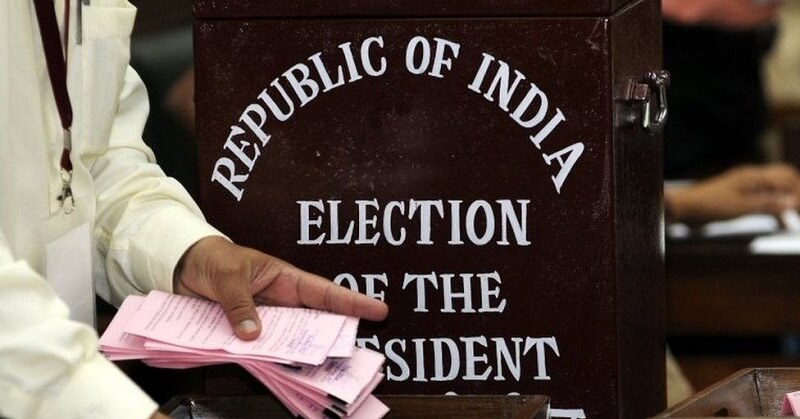
Did it ever cross your mind that how the President of India is elected? There are many things you may not know about the unique and interesting process. So, in this article, we will explain and have a look at the detailed process of electing the President, the current parties’ relative strengths, and how earlier elections have played out.
The current President of India Ram Nath Kovind’s tenure ends on July 25. The dates of the 16th Presidential elections have been announced. The elected MLAs and MPs across the country will vote to elect India’s 15th President on July 18 and the result will be declared on July 21. Under Article 62(1) of the Constitution,
ADVERTISEMENT
“an election to fill a vacancy caused by the expiration of the term of office of President shall be completed before the expiration of the term”
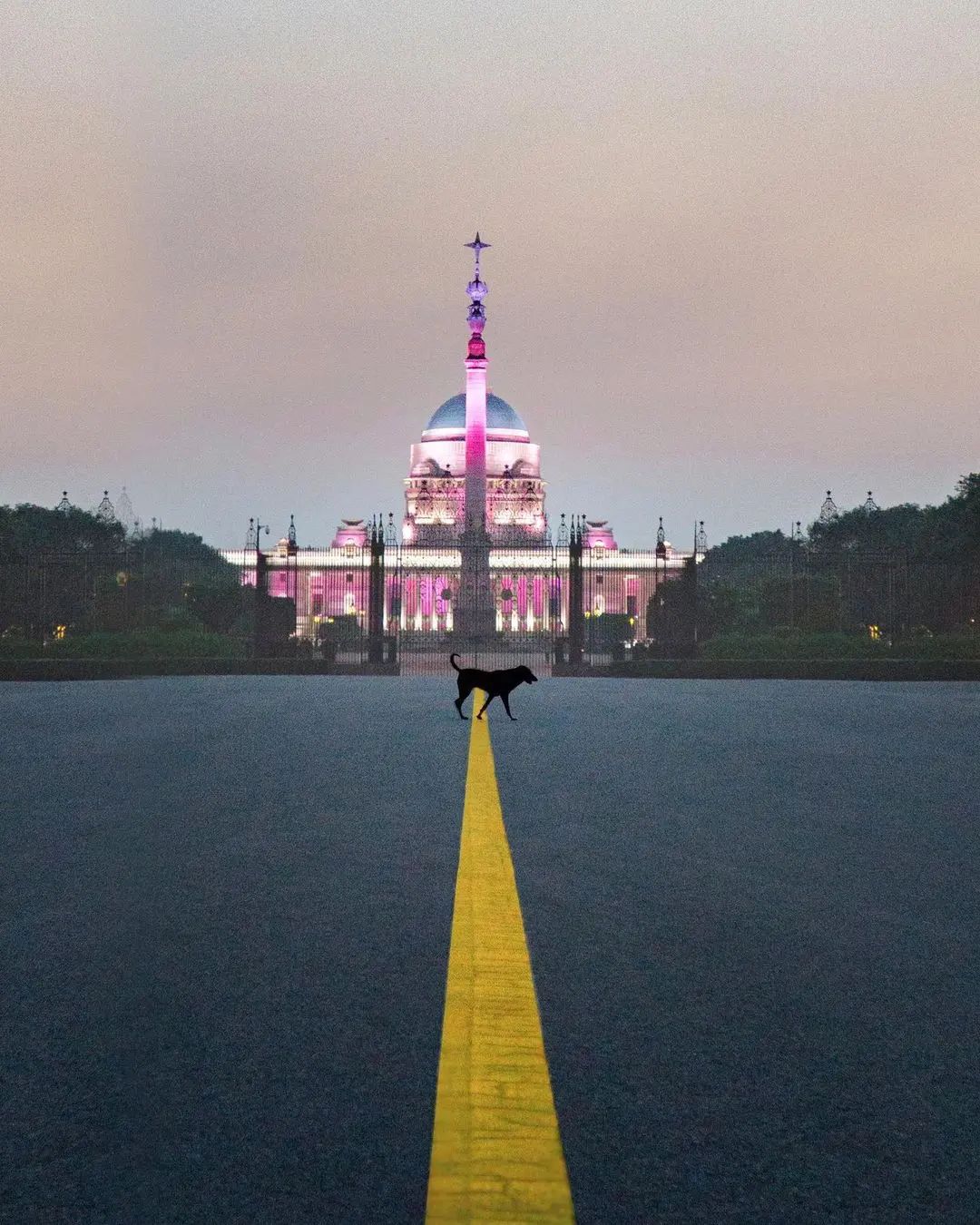
So, how the President of India is elected?
Many of us are not aware that the President is elected by an electoral college. But who are the members of the electoral college? The electoral college consists of MPs of both Houses of Parliament and MLAs of all states including Delhi and Puducherry (the UTs).
The ones who are not considered a part of the electoral college are the nominated members of Lok Sabha, Rajya Sabha, and the Assemblies, and also members of state Legislative Councils.
As Lok Sabha and Rajya Sabha have two and 12 nominated members respectively, voters from the Lok Sabha is 543 and Rajya Sabha is 233, making it 776 voters from Parliament. The Members of Legislative Assemblies (MLAs) of all states, Delhi and Puducherry, sum up to 4,033 voters which makes the total number of members in the Presidential electoral college 4,809.
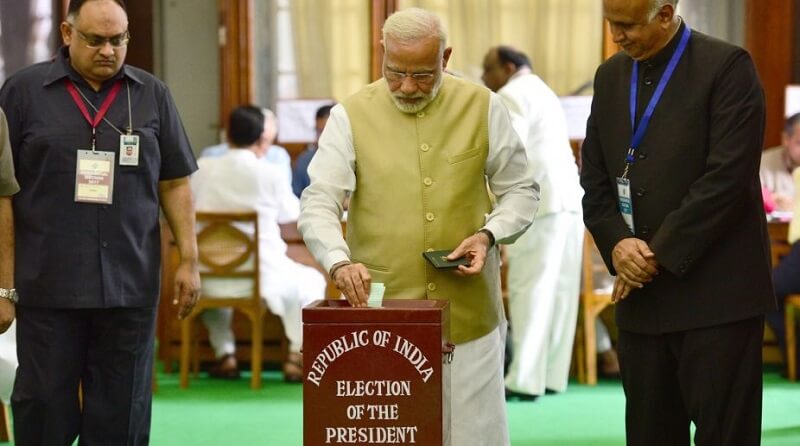
Not only the number of votes, the value of the voter matters
The value of the votes is determined by the population of each state as per Census 1971 and the votes are weighted accordingly. For eg: The value of each MLA’s vote can vary from a high of 208 in Uttar Pradesh to as low as 7 in Sikkim.
ADVERTISEMENT
This means that 403 MLAs of Uttar Pradesh contribute 208 × 403 = 83,824 votes to the electoral pool, while 32 MLAs of Sikkim contribute 32 × 7 = 224 votes. The weighted votes from all the Assemblies add up to 5.43 lakh.
The election process demands that 543 MPs in Lok Sabha and 233 in Rajya Sabha which makes a total of 776 MPs should contribute the same aggregate of votes as the MLAs.
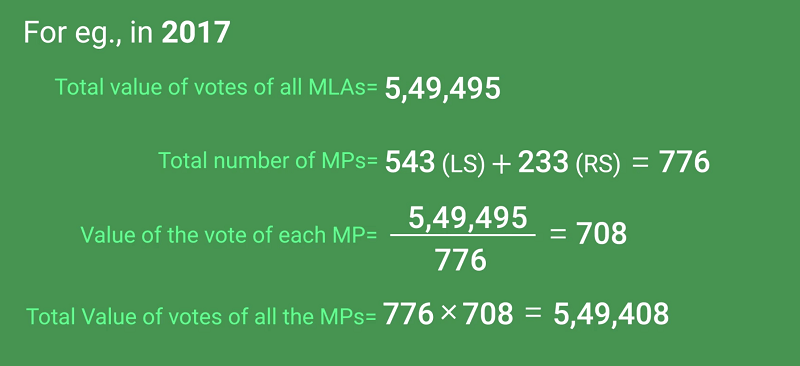
The value of each MP’s vote is estimated by dividing 5.43 lakh by 776, rounded off to 700. Thus, the combined electoral collection from the Assemblies and Parliament adds up to 10.86 lakh.
As per the Election Commission’s data released on Thursday, the total value of votes of the MPs is 5,43,200 and that of MLAs is 5,43,231 making the total sum 10,86,431.
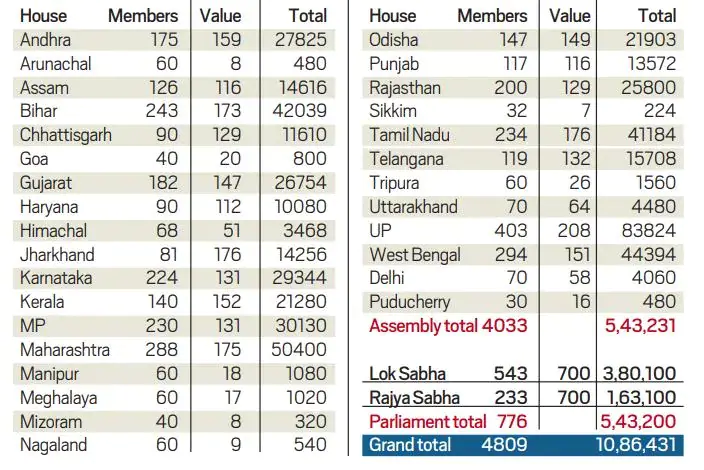
The Delimitation Commission for Jammu and Kashmir recommended a 90-member assembly for the region in its final order. Since an elected house is yet to be in place, J&K will not be eligible to take part in the voting for the Presidential election.
How are the opposition and the ruling alliance placed?
The NDA led by BJP is far ahead of the Congress and its supporters, but still a little short of the halfway mark as of now. By adding up the votes of the MLAs and MPs on either side, without counting the 57 vacant Rajya Sabha seats (16 of which go to polls on Friday while MPs elected unopposed have the other 41), the NDA has 48% of the votes with BJP 42% and allies 6%, while the Congress (13.5%) and its allies (10.5%) have 24%.
ADVERTISEMENT
These allies include the DMK, NCP, Shiv Sena, JMM, and smaller parties like the VCK, RSP, Muslim League, and MDMK.
Outside the two alliances, the Trinamool Congress has 5.4%, YSRCP 4%, Biju Janata Dal 2.85%, and the Left parties 2.5%, with the rest of the votes held by different parties.
As some support from parties either YSRCP or BJD would help to take the NDA candidate beyond the halfway mark, the BJP is banking on the YSRCP and the BJD and some other parties to support its candidate. Reports say that Naveen Patnaik, Odisha Chief Minister met Prime Minister Narendra Modi on May 30, and Andhra Pradesh CM Y S Jagan Mohan Reddy contacted the PM last week.
On the Opposition side, it depends on the way how the Samajwadi Party, TRS, and AAP will vote. BJP has been attacked by the TRS, which was once considered a fence-sitter, and even backed the government on some key Bills, lately. The AAP is in a dispute with both Congress and the BJP.
ADVERTISEMENT
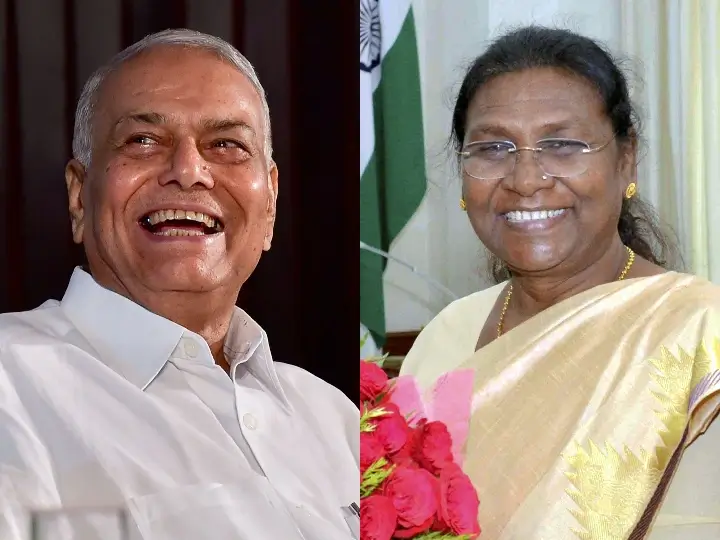
Here is how contested the previous elections have been
1952: Rajendra Prasad won with 5,07,400 votes in the first election as it was a no-contest. Chaudhary Hari Ram did not want Prasad to be elected unopposed and polled 1,954. K T Shah was fielded by the left who was a former alumnus of the London School of Economics and a member of the Constituent Assembly, he got 92,827 votes. Thatte Lakshman Ganesh (2,672) and Krishna Kumar Chatterjee (533) were the other frays.
1957: Prasad was fielded for a second by Congress. He got 4,59,698 votes against Nagendra Narayan Das (2,000) and Chowdhry Hari Ram (2,672)- It was again a no-contest.
1962: Sarvapalli Radhakrishnan, who was Vice President during President Prasad’s tenure was fielded by Congress. He got 5,53,067 votes against Yamuna Prasad Trisulia (3,537) and Chowdhry Hari Ram (6,341).
1967: Kota Subbarao (3,63,971) lost to the Congress candidate, Vice President Zakir Hussain, who won 4,71,244 votes against him. Subbarao retired as Chief Justice of India that year and was also the Opposition’s consensus candidate.
ADVERTISEMENT
1969: This election, was the most controversial one as necessitated by the sudden passing of President Hussain. Under Article 65(1) of the Constitution, the office was resumed as the acting President by Vice-President V V Giri but he resigned in July 1969 as Vice President and also as the acting President.
Tensions arose within the Congress — between Prime Minister Indira Gandhi and the Syndicate (a group of veterans) — came to charge when the party officially fielded Neelam Sanjeeva Reddy while Gandhi contested as an independent and threw her weight behind Giri. She called on party MPs and MLAs to vote according to conscience.
Giri won with 4,01,515 votes to Reddy’s 3,13,548. The Congress split after the party president S Nijalingappa expelled Gandhi at that time. Among other candidates, Swatantra Party fielded C D Deshmukh, and Jana Sangh, polled 1,12,769. There were 12 more in the contest, and the law was changed to prevent non-serious candidates from contesting.
1974: The Congress fielded Fakhruddin Ali Ahmed, and the opposition veteran and a Lok Sabha MP, Tridib Chaudhuri, from the Revolutionary Socialist Party. Ahmed polled 7,65,587 votes to Chaudhuri’s 1,89,196.
ADVERTISEMENT
1977: Vice President B D Jatti took over as acting President following Ahmed’s death. When the poll was held, 37 candidates filed their papers but on scrutiny, all were rejected except one. The only valid candidate was Congress’s Neelam Sanjiva Reddy, who was eventually elected.
1982: Giani Zail Singh (7,54,113 votes) of Congress won against H R Khanna (2,82,685). Nine opposition parties had fielded Khanna who was a Supreme Court judge and had resigned in protest against the appointment of M H Baig as CJI in 1977.
1987: The Left parties fielded legal luminary and former Supreme Court Justice V R Krishna Iyer against Vice President R Venkataraman, who won easily (7,40,148 votes against Iyer’s 2,81,550). The third contestant was an independent candidate from Bihar, Mithilesh Kumar, who got 2,223 votes.
The elections became politically interesting as incumbent President Singh’s equations with Prime Minister Rajiv Gandhi were not good. He was prodded to contest as an independent candidate by some Congress dissenters and Devi Lal of the Lok Dal(B), but he declined.
ADVERTISEMENT
1992: The Congress’s Shanker Dayal Sharma (6,75,804 votes) won comfortably against the opposition’s George Gilbert Swell (3,46,485), who is a former Lok Sabha Deputy Speaker, a former Ambassador to Norway and Burma. He was also a tribal who was the force behind the movement that led to statehood for Meghalaya.
His candidature was backed by BJP and pushed by former Prime Minister V P Singh. Ram Jethmalani (2,704 votes) and the famous Kaka Joginder Singh aka Dharti-Pakad (1,135), who contested lost — over 300 elections during his lifetime.
1997: K R Narayanan, won one of the most one-sided polls ever, polling 956,290 votes against former Chief Election Commissioner T N Seshan’s 50,361. He was fielded by parties in the United Front government and the Congress and backed by the opposition BJP Seshan, who had the support of the Shiv Sena and some independent MLAs.
2002: Congress and most opposition parties decided to back scientist A P J Abdul Kalam, who was the BJP’s choice. The Left fielded Captain Lakshmi Sahgal but Kalam (9,22,884) won a one-sided contest against Sahgal (1,07,366).
ADVERTISEMENT
2007: The UPA-Left nominee, Pratibha Patil, became India’s first woman President with 6,38,116 votes against BJP candidate Bhairon Singh Shekhawat (3,31,306 ). The Shiv Sena who was a part of the NDA at that time chose to back Patil, who belonged to Maharashtra.
2012: Polling 713,763 votes against the BJP’s P A Sangma (3,15,987), UPA candidate Pranab Mukherjee became the 13th President.
2017: In the last election, against Kovind, the Opposition fielded former Lok Sabha Speaker Meira Kumar. Though she had the support of 17 Opposition parties the JD(U) chose to support Kovind. Kovind bagged 7,02,044 votes, and Kumar 3,67,314.
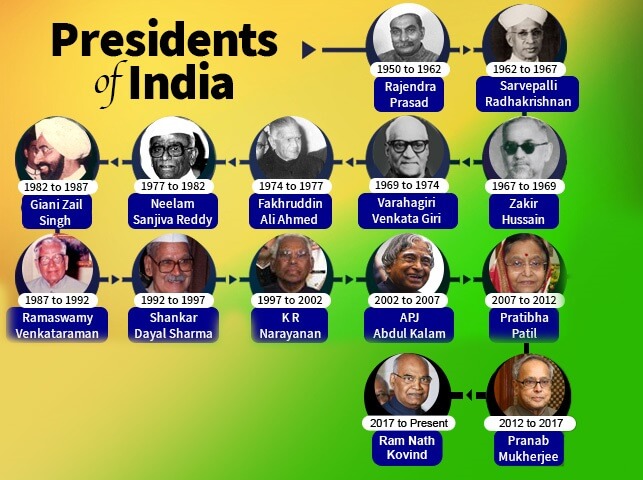
We hope now you got an idea about the process of the Presidential election in our country!
ADVERTISEMENT
Also read: 9 Retirement Benefits Ex-President Of India Enjoy
ADVERTISEMENT











